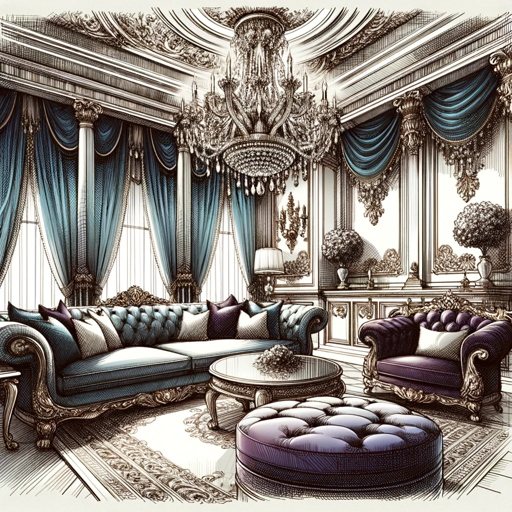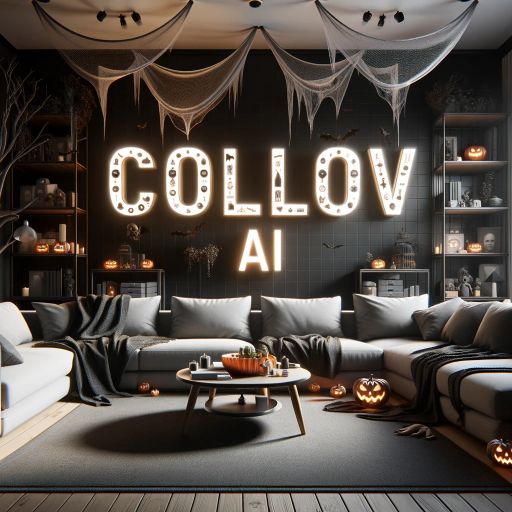Interior Design-interior design advice and tips
AI-powered interior design made simple
Suggest color schemes for a cozy living room
Recommend modern fixtures for my bathroom
Ideas for small space living
Latest trends in kitchen design
Related Tools
Load More
Interior Designer
Interior designer creating innovative, personalized design solutions

Home Interior Design Ideas
Personalized design ideas for your home

AI Interior Designer
Design your home in few words for better experience please visit collov.ai

Home Decoration and Interior Design
Assisting with Home Decoration and Interior Design

Interior Design Expert
Provide me a photo or chat with me about interior design. Transform your space with AI that redecorates your room in one click, respecting your style preferences or surprising you with the latest interior design trends! @JacquesGariepy - v1.3

Interior Designer - design your home
Create your dream interior home around your floor plan! Upload an image, specify styles like modern, eco-friendly, or luxury, and I'll generate 3D designs for your ideal space. Your style advisor!
20.0 / 5 (200 votes)
Understanding the Core of Interior Design
Interior design is the art and science of enhancing the interior of a space to achieve a more aesthetically pleasing and functionally effective environment. It involves balancing form, function, and style to transform spaces according to the needs and preferences of the users. The purpose of interior design extends beyond decoration; it encompasses space planning, lighting design, material selection, furniture placement, color schemes, and the integration of technology to create environments that are both comfortable and efficient. For example, in designing a modern office, interior designers must consider how to optimize layouts to encourage collaboration, ensure ergonomic workstations, and use colors and lighting to boost productivity. In contrast, a home might prioritize relaxation and warmth, using softer textures, subdued colors, and cozy furniture. In both cases, interior design shapes how people experience and use the space in meaningful ways.

Key Functions of Interior Design and Their Real-World Applications
Space Planning
Example
Arranging furniture and defining zones in an open-plan living area to maximize utility without sacrificing comfort.
Scenario
In a compact urban apartment, the designer may divide the open layout into distinct zones such as a living area, dining space, and small workspace using furniture arrangements, rugs, or color variations. This approach optimizes the limited space while creating a visually organized and functional living environment.
Aesthetic Enhancement
Example
Selecting a cohesive color scheme, materials, and design elements to match a homeowner's style preferences.
Scenario
For a homeowner who loves a minimalist aesthetic, the designer may use a neutral palette with clean lines and natural materials like wood and stone. Incorporating large windows, simple furniture, and few accessories creates a serene, uncluttered space that reflects the owner's personal taste while maintaining a sophisticated, modern look.
Lighting Design
Example
Using layered lighting techniques to adjust mood and functionality in different areas of a space.
Scenario
In a multi-purpose living room, a designer might combine ambient ceiling lighting with task lighting (such as reading lamps) and accent lighting (like wall sconces or under-cabinet LEDs) to provide different lighting options for various activities. This enhances the room's flexibility, allowing it to transition from a bright family room during the day to a cozy, intimate setting in the evening.
Who Benefits the Most from Interior Design Services?
Homeowners and Renters Seeking Personalization
These users want to tailor their living spaces to reflect their individual styles, needs, and lifestyle preferences. Homeowners typically aim to create a cohesive design that elevates both the aesthetic and functional aspects of their home. Renters, while limited in structural changes, often seek advice on temporary decor solutions like furniture selection, lighting, and styling that can enhance their environment without violating lease terms. Interior design services offer guidance on how to make the most of any living space, large or small, permanent or temporary.
Businesses and Commercial Spaces
Companies and organizations benefit from interior design to create efficient, brand-aligned spaces that enhance productivity and appeal to clients or customers. For example, an office might require a modern design that fosters collaboration and wellness, while a restaurant may seek an ambiance that aligns with its culinary theme and attracts diners. Interior designers help create environments that not only look professional but also improve workflow, customer experience, and employee satisfaction.

Guidelines for Using Interior Design
1. Visit aichatonline.org for a free trial
Start by visiting the website aichatonline.org to access the Interior Design tool. No login is required, and you do not need a ChatGPT Plus subscription to use it.
2. Set a clear design goal
Before starting, define your project's objectives—whether it’s for home renovation, room makeovers, or professional design projects. This clarity will optimize your experience and ensure relevant advice.
3. Provide specific inputs
Enter specific information about your space, such as dimensions, layout, existing color schemes, or furniture styles. The more detailed the input, the more tailored the design suggestions will be.
4. Explore style recommendations
Use the tool to receive detailed recommendations on trends, color palettes, furniture options, and layout ideas that fit your preferences and space.
5. Apply and experiment
Experiment with various suggestions, like changing colors, adjusting layouts, or exploring different design styles. Test these ideas virtually before implementing them in your space.
Try other advanced and practical GPTs
Law
AI-powered legal guidance made easy.

爆文制造机
AI-Powered Content Creation Tool

Midjourney超级生成器(V5.2 & V6)
AI-Powered Image Creation

甜蜜时光记录助手
AI-powered artwork for cherished moments.
L'Expert SEO
AI-Powered SEO Insights for Your Website

L'Expert Rhétorique Interactif
AI-powered Rhetorical Mastery

Numerical Analysis
AI-powered Numerical Solutions

中文论文润色工具
AI-Powered Enhancement for Academic Papers

Frank's Content Machine La Fiera
AI-driven content creation made simple

VC Associate
AI-powered insights for venture capitalists

Li Hua
AI-powered tool for mastering English vocabulary.

Rock My Profile
AI-driven LinkedIn Profile Enhancer

- Trend Analysis
- Space Optimization
- Home Makeover
- Furniture Selection
- Color Coordination
Common Q&A about Interior Design Tool
How does the tool help with space planning?
The tool provides tailored layout suggestions by considering your room's dimensions, furniture placement, and functional needs. You can also visualize how different furniture arrangements will work in your space.
Can I use this tool for professional design projects?
Yes, the tool is designed to assist both amateurs and professionals. It offers advanced features like trend insights, color palette recommendations, and furniture sourcing to fit a wide range of design needs.
What if I don’t know my design style?
No problem! The tool can guide you through discovering your style by asking questions about your preferences and showing you examples. It will then suggest styles that match your taste.
How can I ensure that the designs are functional and not just aesthetic?
The tool offers functionality-focused advice by incorporating practical aspects like traffic flow, furniture ergonomics, and multi-purpose design elements, ensuring that your space is both beautiful and usable.
Does the tool offer advice on eco-friendly materials?
Yes, it provides recommendations for sustainable, eco-friendly materials and furniture, helping you design a space that is not only stylish but also environmentally conscious.